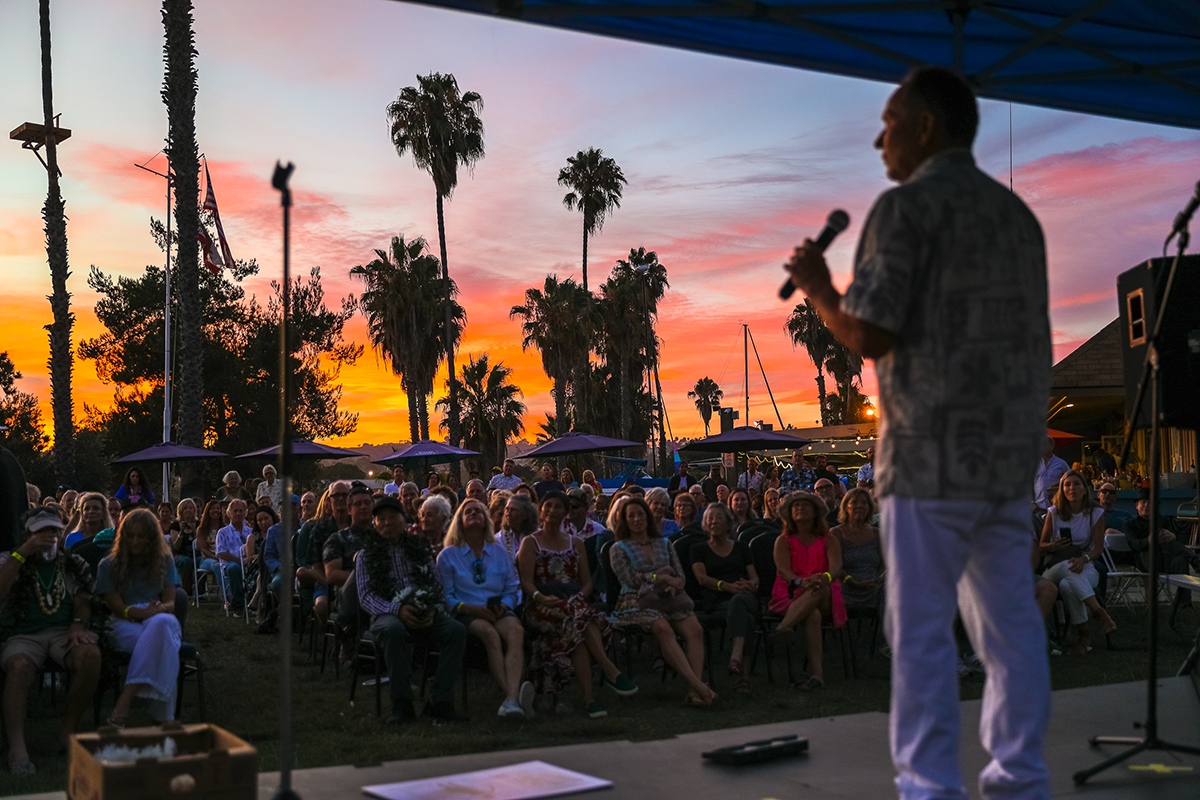Born in La Mesa and raised in La Jolla, Don Okey stands as a pivotal figure in San Diego’s surfing history, renowned not only for his prowess in the water but also for his groundbreaking innovations and foundational contributions to the very fabric of local surf culture. From pioneering surfboard technology to creating iconic gathering places and legendary social events, Okey’s influence is etched into the coastline he loved.
Early Surfing Acclaim and Competitive Spirit
Don Okey was a formidable presence in the water, recognized as a strong surfer and paddler. His skill was evident in his consistent performance at the highest levels of competition, securing a spot in the top 10 finishers at the Pacific Coast Championships from 1939 to 1941. His dedication and talent propelled him to victory in the 1948 Oceanside Pier Paddleboard Race, where he demonstrated remarkable endurance and speed, finishing so far ahead that many competitors hadn’t even rounded the pier. Okey’s competitive drive was matched only by his adventurous spirit, as he often cruised the coast, searching for the perfect wave.
Building the Iconic Shack: A Community Sanctuary
In the late 1930s and into the 1940s, La Jolla surfers, often referred to as “waterboys,” enjoyed a private sanctuary. However, it was Don Okey’s wife who sparked an idea that would forever change the local surf scene. Her simple suggestion—to build a shaded spot for the women and children while the men were out surfing—led to the creation of a timeless legacy.
Under the direct command of the women, the construction of the original Windansea Shack began around January 1946. Don, alongside Woody Ekstrom, Fred Kenyon, and a few friends and World War II veterans, embarked on this project. In a stealth-like operation, they resourcefuly sourced eucalyptus branches from Scripps Hospital to build the structure. What began as a humble 10×12-foot thatched hut with flimsy poles, primarily for shade, evolved into something far grander.
After its completion in early June 1946, the Shack initially hosted a small toast. However, it quickly transformed into the premier venue for annual Polynesian Luaus, a tradition inspired by much-admired Hawaiian beach culture. These gatherings grew into hugely popular social events, drawing hundreds of surfers from up and down the California coast. In 1949, one luau alone saw 600 attendees, feasting on 300 pounds of beef short ribs and a 206-pound pig cooked Hawaiian style in the sand. These events became synonymous with the Windansea spirit, though their increasingly rowdy and unruly proportions eventually attracted the attention of local authorities, leading to the end of the annual Luaus by 1950.
The original shack, sadly, succumbed to a winter storm in 1949, but its importance was so profound that Kenyon and Okey, with the help of other local surfers, promptly rebuilt it the following year. To this day, the shack at Windansea stands as a testament to Don Okey’s passion for the ocean and surfing, a symbol of a vibrant beach culture he helped found.
Pioneering the Foam Revolution: An Innovator’s Legacy
Don Okey’s impact wasn’t limited to community building; he was also a true innovator in surfboard design. In the early 1950s, a pivotal period in surfboard evolution with the advent of lightweight materials, Okey emerged as a key experimentalist.
After building an 11-foot all-balsa board with a chambered design in 1950, Don became enthused by John Blankenship’s new all-foam board. Recognizing the potential, Okey swiftly ordered two large foam logs from Dow Chemical in Michigan. In early 1951, these 30” x 30” x 9’ logs arrived, marking the beginning of a new era. Don rigged a hot wire to slab the logs into surfboard stock, creating his first foam board as a copy of his balsa design, complete with a plywood stringer. This board, finished with muslin cloth and fiberglass, was successfully surfed at Windansea in 1951, showcasing the viability of foam.
His experiments quickly turned commercial. In the spring of 1951, Okey filled a significant order for eight foam surfboards, two for Frank Lyons and six for Ed Cudahy (who shipped his to San Onofre). These boards, ranging from 9’ to 10’6” and finished with opaque resin, solidified Okey’s role in the perfecting of foam board chemistry and process, a revolution that transformed surfboard manufacturing.
In the 1960s, Don continued his innovative streak by inventing a shaping machine that vastly increased production, turning out hundreds of local boards and further cementing his influence on the industry.
Enduring Influence: The Windansea Surfing Club
While Okey and his friends eventually moved on to other pursuits, the vibrant beach culture they founded lived on. The informal “Plank Boys” club of 1946, centered around the Shack and its Luaus, laid the groundwork for future organizations.
In the 1960s, the surfing club spirit was rekindled with the formation of the formal WindanSea Surf Club, initiated by Mike Hynson, Chuck Hasley, and Thor Swenson. This new generation became the caretakers of the beach, carrying the surfing lifestyle forward. This club has since grown to over 200 members, achieving numerous surf honors and continuing the legacy of community and excellence that Don Okey so passionately began.
Don Okey’s contributions — from designing pioneering surf shacks and organizing legendary luaus to his pivotal role in developing foam surfboards and inventing shaping machines — make him an indelible figure in the history of San Diego surfing. His vision helped shape not just the waves, but the very soul of the surf community.
Recommended products
-
Decal Don Okey San Diego Surfing Hall of Fame – Beach Shack Life Design
$4.99 -
Black Mug Don Okey San Diego Surfing Hall of Fame – Beach Shack Life Design
$11.48 -
T-Shirt Don Okey San Diego Surfing Hall of Fame – Beach Shack Life
Price range: $29.99 through $34.99 -
Champion Sweatshirt Don Okey San Diego Surfing Hall of Fame – Beach Shack Life Design
Price range: $59.99 through $64.99

